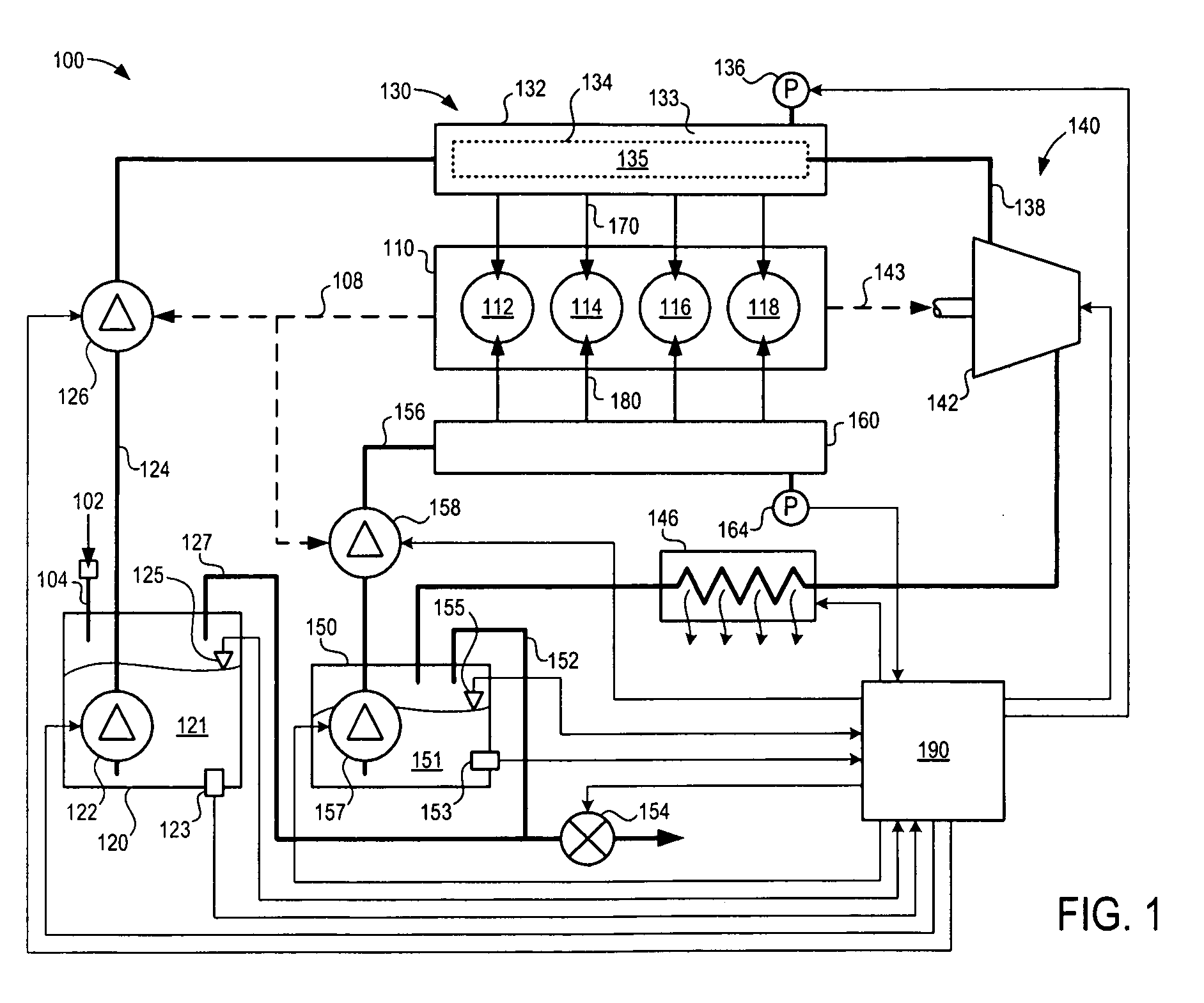Fuel Rail Assembly Including Fuel Separation Membrane
a technology of fuel rail and separation membrane, which is applied in the direction of electrical control, process and machine control, instruments, etc., can solve the problems of reducing the effective size of the separator, fuel separation rate, and impairing engine performance, so as to improve the separation rate of fuel mixture, reduce cost and other associated packaging constraints, and increase the fuel separation rate
- Summary
- Abstract
- Description
- Claims
- Application Information
AI Technical Summary
Benefits of technology
Problems solved by technology
Method used
Image
Examples
Embodiment Construction
[0019]FIG. 1 shows a schematic depiction of an example fuel system 100 for a fuel burning engine 110. As one non-limiting example, engine 110 can be configured as an internal combustion engine that is configured on-board a vehicle as part of a propulsion system. However, engine 110 can include other engine types and can be configured in other suitable applications. In this particular example, engine 110 includes four combustion chambers or cylinders indicated at 112, 114, 116, and 118. In other examples, engine 110 may include any suitable number of cylinders. Engine 110 will be described in greater detail with reference to FIGS. 2 and 3.
[0020]In this example, each cylinder of engine 110 can receive at least two separate fuels having different compositions in varying relative amounts based on operating conditions. Thus, each engine cylinder can receive a first fuel as indicated at 170 via a first fuel rail assembly 130 and can receive a second fuel indicated at 180 via a second fuel...
PUM
 Login to View More
Login to View More Abstract
Description
Claims
Application Information
 Login to View More
Login to View More - R&D
- Intellectual Property
- Life Sciences
- Materials
- Tech Scout
- Unparalleled Data Quality
- Higher Quality Content
- 60% Fewer Hallucinations
Browse by: Latest US Patents, China's latest patents, Technical Efficacy Thesaurus, Application Domain, Technology Topic, Popular Technical Reports.
© 2025 PatSnap. All rights reserved.Legal|Privacy policy|Modern Slavery Act Transparency Statement|Sitemap|About US| Contact US: help@patsnap.com



